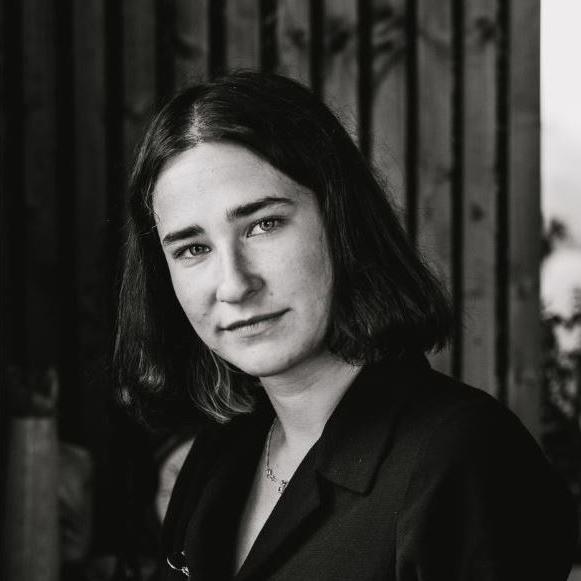During the Black Nights Festival in Tallinn, I met Anna-Maria Jams, Estonia’s first and only foley artist. That sparked my interest, and I asked for an interview, which she agreed to do.
How did everything start? When did you decide to become a foley artist? Since you are the first one in Estonia, I guess you were into sound design first.
I studied sound design at The Baltic Film and Media School. During my third year, in 2018, a former schoolmate, Israel Bañuelos. from Mexico, asked me if I knew any foley artists in Estonia. I asked around if anybody knew somebody, and then I realized that nobody was doing that, so I said, “Ok, I can try to do it”. It was an animated feature that was nominated for an Ariel award. So I did, and it took a long time since it was my first project, around a month and a half. And during the process, I understood that I really like doing this.
So then you had no formal training at all. I mean, there was no training for foley artists, just for sound design in general, right?
We had one very short workshop with one of the best foley artists [Heikki Kossi], but it was really like a couple of hours.
So, where does he come from?
He’s from Finland. And when I did the Mexican animation, people heard about it. “It’s the girl that does foley”, and more projects started coming my way.
So did you have to rent a space to create the effects?
Then I used the BFM studio. First, we used the mixing studio with surface boxes in there, and then we used a tiny room the size of a toilet. We built an entire studio there.
In that small space?
Yes.
What do you think you learned the most from this first film? Was it more difficult than you expected? More challenging?
Yes, because there were lots of things that I couldn’t do. Obviously, I can’t take this creature that doesn’t exist in the real world into the studio, but I have to think about what this creature sounds like.
There were many animals in the film?
There were lots of fantasy going on., like, glowing animals and skeletons running around, so that was quite tough. I had to try different things when we were working because we didn’t have any props at school. So I gathered everything myself, or I found some other things around the school and tried to make it work.
Were they happy with the result?
Yes, I think so. I was also glad that the sound designer showed me what he did with my foleys because that’s how I learned if I was doing something wrong.
Does it sometimes happen that the collaboration is not so good with the sound designer?
I always try to be active and ask for honest feedback. If I’m doing something wrong or the sound designer doesn’t like it, I want him to say so.
Do you feel that the sound designer is always right?
It depends. Some designers I’ve worked with are really into details and think everything should be exactly as they want. Some are happy if I’m doing something extra they don’t need, but sometimes they end up not using it, so it’s really different.
And if we move forward in time?
Then I graduated. I got to use a mixing studio that one of my teachers at the university has. I am happy to use the studio now, as well. So I turned the mixing studio into a foley studio. I still don’t have my own studio, but that’s the next step. I want to achieve.
I guess the first project was vital for you to become a name in the business.
Yes, because getting your own foley studio is really expensive. I don’t know where I would get funding if I didn’t have a name.
So, what kind of projects came after that?
First, I got a feature documentary. That was interesting to make. It’s called Prazdnik. The next one was an animation feature. I would say it’s the film with the most extensive sound team behind it in Estonian cinema because I think we were seven people working with the sound on that one. Many Estonian films are made with only one person, the sound designer.
How come you were so many on that project? Did it have a big budget?
It wasn’t a big budget, but the film is based on animation shorts that lots of people in Estonia know. Then they made a feature, and we were delighted to work on it. It was a sequel to those shorts. It’s about an old man called Vanamees. It’s a fun film called Vanamehe film, so we were pleased to work on that project.
Was the film successful?
Yes, and not only in Estonia. It also got some attention in France and other places around the world.
How was that project different from the first one?
Well, with the first one, I got to use the big studio. With the second one, I had to use the small toilet-size one. So, that was a challenge. We also had to do the footsteps in MIDI. With this one, I used a prop I will remember my whole life. I had to make a sound for milking a cow. I made some soapy water, then put it in a big plastic bottle, and then made a small hole into a condom which I put on top of the bottle, turned it around, and then started milking the condom. It worked out. It sounded quite authentic.
If we continue chronologically, what happened after that?
I got a bigger project from Finland. A TV series called Bad Apples. It’s about a girl, a university student, who is put in a mental hospital, but she doesn’t know why she’s there. So the whole season, she’s trying to find out why she is put there. I worked on all eight episodes in that season. It’s set in the seventies, so I had to make the sound for typewriters, for instance. Lately, I have made a documentary for Switzerland, and I’ve done a couple of short films for the UK, thanks to my friend who went to study there. A friend of his needed someone, so I’ve done three projects for him already.

Do you regard yourself as an artist or more like a technician?
I feel my work is more artistic, but I would like to do a feature film that I feel connected with, where I have a decent budget, with lots of time to think everything through and try new technical ideas, as well.
Do you only work with foley? You don’t work s with sound design in general, as well?
Not anymore. I did it for some time, mostly with shorts and commercials, but I’m not enjoying it so much because it’s lots of time sitting behind the computer. I prefer to move around. The next important step for me is to find my own studio, but it’s challenging because it depends on what the room is like and where it’s located. If it’s in a noisy place or not, being able to have water inside would be a major asset.
Anna-Maria Jams – The Spectator
So from an artistic point of view, how does it work when you watch films now with this experience? Are you always obsessed with the sound design?
I notice more things than I used to, but if the sound is bad, I can still enjoy the film. I try to keep those things apart. One is my work, and the other is enjoying the film. It doesn’t take me out of the film, but sometimes, I think it’s kind of sad because I know how much better it could be. It happened a few times during this festival.
Quite often, I think the sound design is a bit too much, that it’s too powerful. There’s no subtlety.
Yes, and also, quite often, it is too loud. I prefer to get the levels down. There are different challenges. For instance, you mix differently for streaming platforms because you have to do a stereo mix and not only a 5:1 or Atmos. You have to have different versions, so maybe the stereo mix is good, but if you go to the cinema and watch the same film, It’s bad or vice versa. There are still many good designers out there.
I guess they are not the ones who decide how loud it will be; it’s rather the director.
It can be the director or the producer, or somebody else. Then there is also the topic of music.
How does that work? Do you sometimes feel that your foley effects were drowned out by the music?
That hasn’t happened to me, luckily. Sometimes I’ve heard the same song used in different films, and I wonder why. There is so much music out there. Whenever I start a new project, I Ask if the music cues are ready so I know where the music is. I listen to the film first and feel what it’s like.
Is it common that the music is finished that early?
Yes, because the foley is usually the last thing they add in live-action films, so at least some music is often ready when I start working on it. I watch the film to see if there are any sound effects already. I consider where they have music so that I won’t make too many foleys there, and so on.
It must be a big difference if you have a film with many people running around compared to a small drama with two people in a room. Have you done bigger things with lots of people as well?
That can actually be easier since you don’t notice everyone, so you fill in whatever works, in a way.
So you are, more or less, autodidact?
Yes, but I’m lucky that my coursemate Siim Skepast was really helpful because he was the first recordist for me, and he had the energy to research how things were done abroad. That pushed me to learn more myself, so I ordered the Foley Grail book. When I was at university, I came into contact with two studios in the UK. I went there to see the studios and how they work there. That was also really inspiring.
So after some time in the business, do you have your own favourites among foley artists, and you will watch films because of that? Does it work that way?
Yes, it kind of is because sometimes a foley artist is doing a certain kind of film, so maybe my taste is similar to his. Heikki Kossi is one of my favourites.
The guy you had the workshop with?
Yes, I really liked his work in Sound of Metal, for instance.
He worked on that one? Lots of things to do there.
Yes, it’s a really interesting film for a foley artist.
Is it difficult for sound engineers to accept that a foley artist does the foley now? You said that until now; the sound engineer did that as well. Has there been any friction there?
The sound designers are actually pleased since they have lots of things to do, and not having to think about the foley give them more time for other things. The producers can be a problem that they make a budget without considering a foley artist. I understand that because they have so many things to worry about. So, it’s important for me to be noticed, and hopefully, they will adjust the budget accordingly.
Do you have any new projects coming up?
I have a Finnish documentary and also a TV series from Finland, as well that I’ll do with now long time Recordist Joonas Taimla
For more info, check out Anna-Maria’s webpage.
